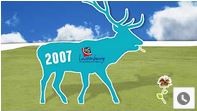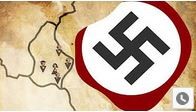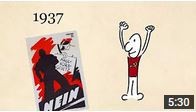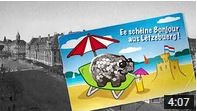Teaching Digital Source Criticism to so called ‘Digital Natives’
I recently had the enriching experience of being a guest lecturer in Prof. Michel Margue’s course on Source Criticism, offered at the University of Luxembourg. The goal was to sensitize over sixty undergraduate students of history to the principle of applying source criticism to digital sources. My exploration in their biotope was surprisingly revealing. After having discussed the properties of charters, manuscripts and of other analog tangible sources with Prof. Margue, it was now my turn to try and catch their attention.
Actually, the most daring challenge was not explaining the complexity of tracing the origin of a digital source on the web, but was getting into dialogue with them. They seemed reluctant to sit in the first five rows of the lecture hall even after I chased them out of the back rows. But judging from how they subtly nodded their heads and smiled, and from how at the end of the lesson they loudly knocked on their tables, their need to keep distance did not seem to be at odds with their interest in the subject.
I started my lesson with asking who uses what kind of social media. My expectation of a massive raise of hands with regard to Facebook, Snapchat, WhatsApp, Istagram was confirmed. To my surprise, which may reveal my disconnect with this cohort of youngsters, Twitter received a convincing ‘booohhhhhh’. Another surprise was the many hands that were raised when I asked about their ‘analog’ media activities, such as writing letters with a pen, listening to a tube radio, or using a mechanical typewriter. My assumptions about the so called ‘digital natives’ who have never opened the door to a postman, obviously needed to be reconsidered.
After my lecture on the transition from analog to digital data the students were asked to apply the classic Rankeian source criticism to a clip, which I had found on Youtube with an animation of the history of Luxembourg. A tough task, when the only metadata that is provided is the logo of a kiwi, presumably of the company that has created the clip.
I first showed them the journey of clip from a personal screen to the online youtube environment to make them conscious of the many transitions of the content. The many basic questions that can be asked to a source - who was the author; when, how and why was it created - were spread among pairs of students, with the task to write a short answer with a minimum of 150 words. They had to send me their answers via e-mail, and my plan was to create an overview of all the answers and publish them on a Padlet platform. This is a virtual noticeboard that can be accessed and edited without the need to first create an account.
Unfortunately the feedback was poor, as only 4 of the 25 pairs sent in an answer. But while discussing the results with the students during my second guest appearance, it dawned on me that the exploration required from them needed to be articulated in more precise terms. I had assumed that digital natives have a natural reflex to interact with the options that a Youtube interface offers, such as subtitles, loudness, speed, translation, share etc. Based on this assumption, I had included a question about how the digital source had dealt with text. The answer I had expected was a reflection on the time-based French subtitles that are generated automatically. But it seemed no one had considered to explore this option. Instead, they had ‘read’ or ‘viewed’ the clip in a linear way, from left to right, from top to bottom, drawing the conclusion that the only text that is shown is: Published on 14 jan. 2014 - 2 petits extraits d'une animation sur l'histoire de la ville de Luxembourg. They had not engaged with the interactive features offered by Youtube.
When I explained to them that I had expected them to behave like they do when they interact with content on Facebook, they understood exactly what I meant. The most plausible explanation, is that Facebook is associated with fun, and completing an assignment probably not.
From googling KIWI to Histoire de Luxembourg
What was equally remarkable, was the result of tracing the origins of the mysterious Kiwi-clip, an effort that was made by some of the students, and of course by me, who had to assess the thoroughness of their research. It turned out to be an excerpt of a co-production with historians of the very same university where I was teaching. This information was shared with me by the company Kiwi-media, not the one based in the Netherlands, Qatar or California, but the one based in Luxembourg, and the successor of Imedia, the company who created the clip in 2012. I was very pleased to learn from Raphael Mersch, that he had been approached by students who had traced the company on the web. Backed up by some details I succeeded in identifying Sonja Kmec as the academic who was involved in the creation of the clips, and who was wilful to share her insights with the students through this short testimonial in French:
So it turned out that there was a whole series of clips, and that this was the result of a cooperation between the museum of History of Luxembourg Musée Dräi Eechelen, historians Sonja Kmec, Gianna Thommes and Pit Péporté from the Institute of History of the University of Luxembourg, with assistance from Simone Beck, a history teacher, and Claude Frisoni, the former director of Abbaye Neumünster. The clips had been created at the time to link the permanent exhibition of the museum to the temporary exhibition ILUX about Luxembourgish identities.
I promised Sonja to contact Kiwi Media, the Ministry of Culture of Luxembourg, who have financed the project, and the curators of the museum, to ask permission to publish the entire series of clips on Youtube. This meant that the informative value of the content would no longer be bound to a fixed location and carrier - the museum building where the DVD could be viewed at the time - but could be shared with anyone with an internet connection. The positive answer by the Ministry of Culture, was seconded by the director of the Musée 3 Eechelen François Reinert, and the requirements for ‘Operation Relaunch Digital Orphan’ were met. It is a strange coincidence, how a lesson on digital source criticism has led to the retrieval of one of the first digital representations of the history of Luxembourg. So we proudly present the rebirth of a series of four clips on the rich history of Luxembourg, that can be viewed, as can be expected from a multilingual academic hub, with voice overs in French, German and English. Nice material for the in the history classroom!!!
Tip Top !!!!!!
Below is the complete series of original videos that cover the four topics:







